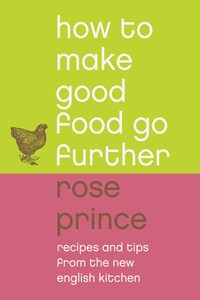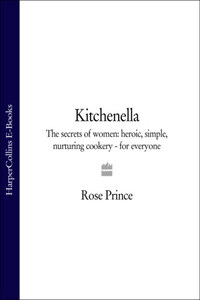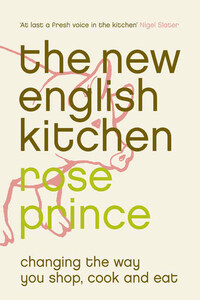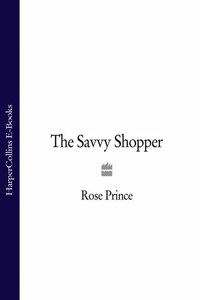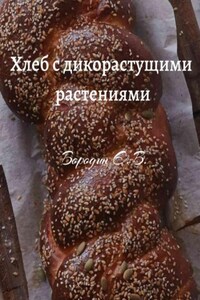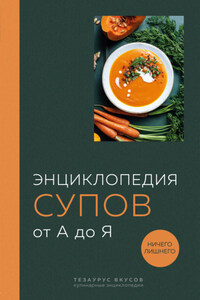When you eat a langoustine, it gives you a present of its shell. Take that shell, toast it in a pan with some others, then boil in water – and you have a broth. That broth becomes one to pour over rice noodles with spices … You bought something good for a meal and it gave you two things good.
This simple idea not only enables you to eat well – twice – but is also a solution to the contemporary kitchen dilemma: how to make better-quality food something everyone can eat every day. This is possible not only through clever recycling – making, say, roast chicken leftovers into stock and so bringing to the table a second dish of risotto plus a third of smooth vegetable soup – but also by finding economical ways of buying the best, such as buying direct from farms using home delivery, or scouting vegetable stalls for good deals on seasonally abundant vegetables.
The New English Kitchen was born of a furious determination to connect the paths of two parallel stories. The first is a happy tale of lovely food, made using good recipes created by television chefs. It has been hard to ignore the cookery boom in all its guises. Up front, the message is all-embracing: consume, and choose what you want; it is all there in the lifestyle pages of the weekend supplements for the taking, cooking and eating.
The second story is unsettling. Looking regularly at the daily papers, it is clear that there is something wrong: the food chain is in crisis. Resources have buckled under consumer and retailer pressure to produce cheap food. Unpleasant stories emerge about food-related diseases in livestock and humans; UK farming faces financial ruin, the global market unfair, food is adulterated with chemicals and a growing number of children so unhealthy due to overeating fatty, sugary food that their parents may well outlive them. Rarely does a week pass without headlines reporting more trouble in the food industry.
Flick back to the recipe feature in the magazine – and to be quite frank you could be on another planet. Enjoy! Chargrill some more tiger prawns – to hell with the devastating effect warm-water prawn farming has had on the mangrove forests! Teriyaki another chicken breast – never mind where it comes from!
But beyond the headlines, there is a fledgling army of farmers, food producers, campaigners and food writers who are giving food and cookery back their integrity. More vital still is the consumer who wants to buy the best in order to eat well every day. This book is for you. It will help your good intentions into practical reality, proving that sustained good eating need not use up all your money and time.
Bread can pull off a feat that few cooked foods are capable of: as it matures, it develops new and interesting uses. In other words, it ages gracefully. Once past its sandwich era, older bread fits easily into simple recipes: it lies beneath radiant vegetable broths, turns up in a bread, red wine and onion soup, blends smoothly into a clove-infused sauce, and can be sweetly saturated by a creamy, eggy custard with spices and fruit. There’s always toast, too, an edible plate for favourite things. The bread that can do all this is not sliced and wrapped, sometimes costing little more than a first-class stamp, but made in the slower tradition. This bread has real integrity but it costs a bit more – which is why it is worth knowing how to use it as it ages.
The life of a good loaf of bread could unfold in the following way. On day one, it is as fresh as can be, the interior deliciously elastic and the crust crisp as an eggshell. A day or two later the crumb begins to dry, the crust to soften, and it’s good for toast. Toast brushed with flavoured oil, then topped with salad leaves and soft fresh cheese; toast with creamy scrambled egg and marinated fish; or, best of all, toast spread with real beef dripping from yesterday’s roast. Next day, put a slice of the now drying bread into a bowl and ladle over some vegetable broth. Or, if you are having a supper party, you might use the bread to make a toffee pudding or a fruit charlotte. By the end of the week, anything left from the loaf can be made into breadcrumbs. Eat them spiked with lemon zest beside roast poultry or game; mix them with garlic, herbs and olive oil for stuffing vegetables; or store them in the freezer for bread sauce. By now, I think it would be safe to say your loaf has earned its keep. You bought it to make a sandwich and it has contributed to at least four meals.
The economics of bread have an interesting pattern. An 800g loaf of sliced, wrapped bread costs about £1.45 pence, but can drop lower during supermarkets’ price wars. Better-grade, high-street-baked sliced white costs about £2. Handmade traditional bread is twice that, at around £4-5, but a loaf made at home with best-quality flour costs about 68 pence – considerably less than the cheapest low grade bread.
